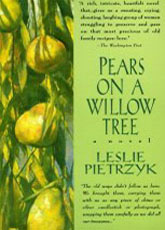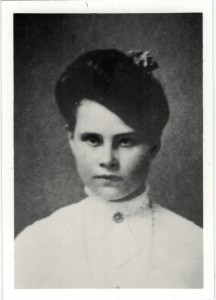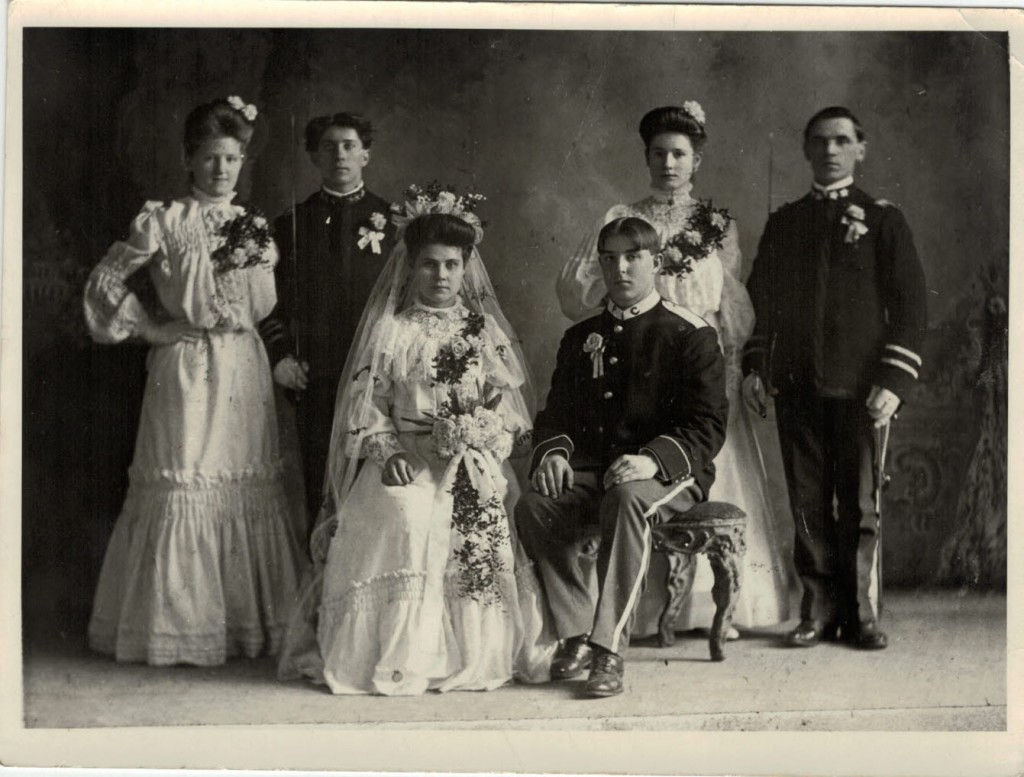 Pears on a Willow Tree
Pears on a Willow Tree
Buy through independent bookseller
Reading Guide to Pears on a Willow Tree
Harper Perennial
Pears on a Willow Tree is a multigenerational roadmap of love and hate, distance and closeness, and the lure of roots that both bind and sustain us all.
The Marchewka women are inseparable. They relish the joys of family gatherings; from preparing traditional holiday meals to organizing a wedding in which each of them is given a specific task — whether it’s sewing the bridal gown or preserving pickles as a gift to the newlyweds. Bound together by recipes, reminiscences and tangled relationships, these women are the foundation of a dignified, compassionate family–one that has learned to survive the hardships of emigration and assimilation in twentieth-century America.
But as the century evolves, so does each succeeding generation. As the older women keep a tight hold on the family traditions passed from mother to daughter, the younger women are dealing with more modern problems, wounds not easily healed by the advice of a local priest or a kind word from mother.
Amy is separated by four generations from her great-grandmother Rose, who emigrated from Poland. Rose’s daughter Helen adjusted to the family’s new home in a way her mother never could, while at the same time accepting the importance of Old Country ways. But Helen’s daughter Ginger finds herself suffocating within the close-knit family, the first Marchewka woman to leave Detroit for the adventure of life beyond the reach of her mother and grandmother.
It’s in the American West that Ginger raises her daughter Amy, uprooted from the safety of kitchens perfumed by the aroma of freshly baked poppy seed cake and pierogi made by hand by generations of women. But Amy is about to realize that there may be room in her heart for both the Old World and the New.
~~~
PEARS ON A WILLOW TREE helps represent Detroit in this L.A. Times listing: “A Map of 1001 Novels to Show Us Where to Find the Real America” by author Susan Straight.
Praise:
“Reading this novel is like leafing through a family photo album (one of Pietrzyk’s favored motifs) except that, once you pick up this book, it’s hard to put it down.”
— Publisher’s Weekly (starred)
“Pears on a Willow Tree marks the debut of a genuine and fully developed talent with a most promising future. It is a rich, intricate, heartfelt novel that moves with a smoothness and sureness many experienced novelists will envy, a book that breaks through the crust of expectation and stereotype and gives us a sweating, crying, shouting, laughing group of women struggling to preserve and pass on that most precious of old family recipes: love.”
— The Washington Post
“Readers will laugh, cry and occasionally want to join the frequent family feuds at the kitchen table. But Pietrzyk’s impressive first novel is not just about being Polish, being an immigrant or being female. It’s about the American experience, the importance of maintaining cultural traditions and the most complex of subjects: the human spirit.”
— The Detroit News

Rose Marchewka Lendo, my great-grandmother

Wedding of Rose Marchewka and Joseph Lendo, my great-grandparents. 1906
RECIPE FOR PEARS ON A WILLOW TREE
My grandmother really did make the best pierogi in the family! Plum (prune) was her favorite. Honestly, I’ve not had much luck making them for myself; they are harder than they sound, and I’m not good with dough (don’t ask me about piecrust!). Lucky for me, there’s a Polish market up in Baltimore that sells frozen pierogi which are excellent. But don’t let me scare you! Give these a try and let me know what happens.
Pierogi
From Treasured Polish Recipes
- 2 eggs
- ½ cup water
- 2 cups flour
- ½ teaspoon salt
- (Remember Rose’s secret…a little sour cream!)
Mound flour on kneading board and make hole in center. Drop eggs [and sour cream] in hole and cut into flour with knife. Add salt and water and knead until firm. Let rest for 10 minutes covered with a warm bowl. Divide dough in halves and roll thin. Cut circles with a large biscuit cutter. Place a small spoonful of filling a little to one side on each round of dough. Moisten edge with water, fold over and press edges together firmly. Be sure they are well-sealed to prevent the filling from running out. Drop pierogi into salted boiling water. Cook gently for 3-5 minutes. Lift out of water carefully with perforated spoon. [If you want to be decadent, fry in melted butter for 5 minutes or so on each side, until browned.]
Cheese filling:
- 1 cup cottage cheese (drained) or farmer’s cheese
- 1 teaspoon melted butter
- 1 egg beaten
- 3 tablespoons sugar
- ¼ teaspoon cinnamon
Mix cheese and melted butter. Add other ingredients and mix well. Fill pierogi. Serve with melted butter and sour cream.